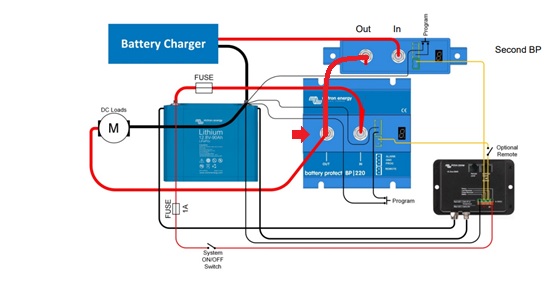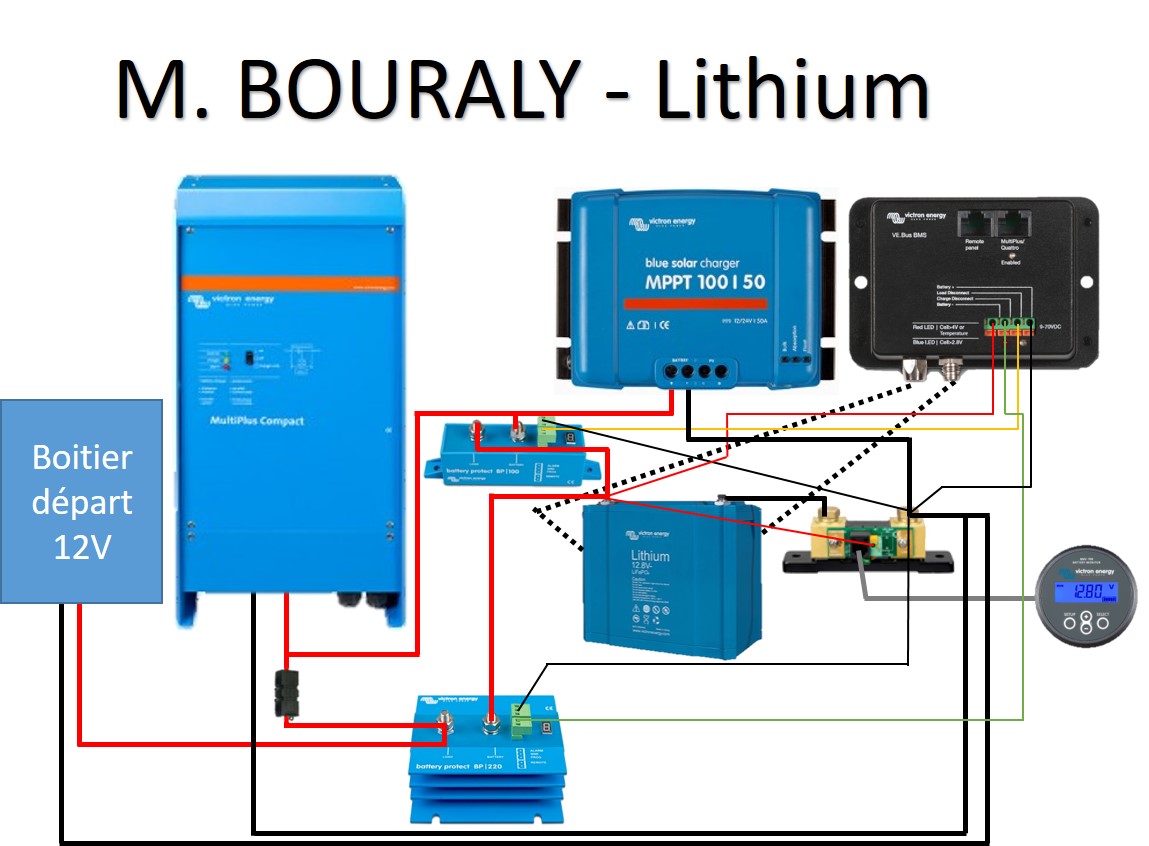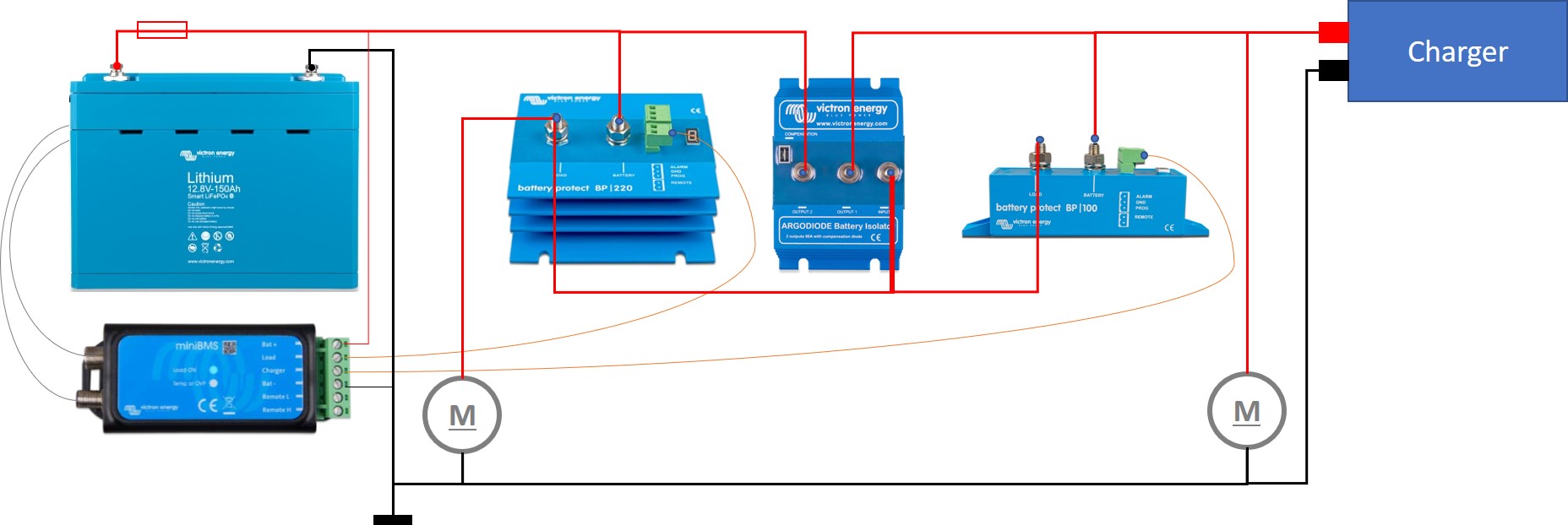Hi,
I have two questions:
- is a BatteryProtect able to handle reverse current when connected as shown below in case of the BP220? Reverse current would be up to 30A while charging, and Vout >Vin.
- In case 1. is possible, let's now now assume the BP220 disconnects due to cell under voltage ( and thus BMS Load Disconnect output being set free floating). When connecting the charger (14.2 or 14.4V) thereafter, what would the voltage drop between Vout and Vin be? Can the BP220 handle 30A reverse current in that case, up to the point when it connects again after 30sec?
Note: the design intent of the layout below is to protect the SmartLithium battery from standby current drawn by the charger in case of cell under voltage. With the original design from the manual, this could only be achieved by a main switch (or pulling the fuse) between battery+ and BP. I cannot use a Cyrix-Li-Charge because my charger applies a IU1oU2oU3 charging characteristic with U3 being below the Cyrix-Li-Charge 13.7V engagement level.
 Image: BatteryProtect Manual figure 5, modified (second BP out connected to 1st BP out instead of 1st BP in as in original diagram).
Image: BatteryProtect Manual figure 5, modified (second BP out connected to 1st BP out instead of 1st BP in as in original diagram).
Cheers,
Stefan




